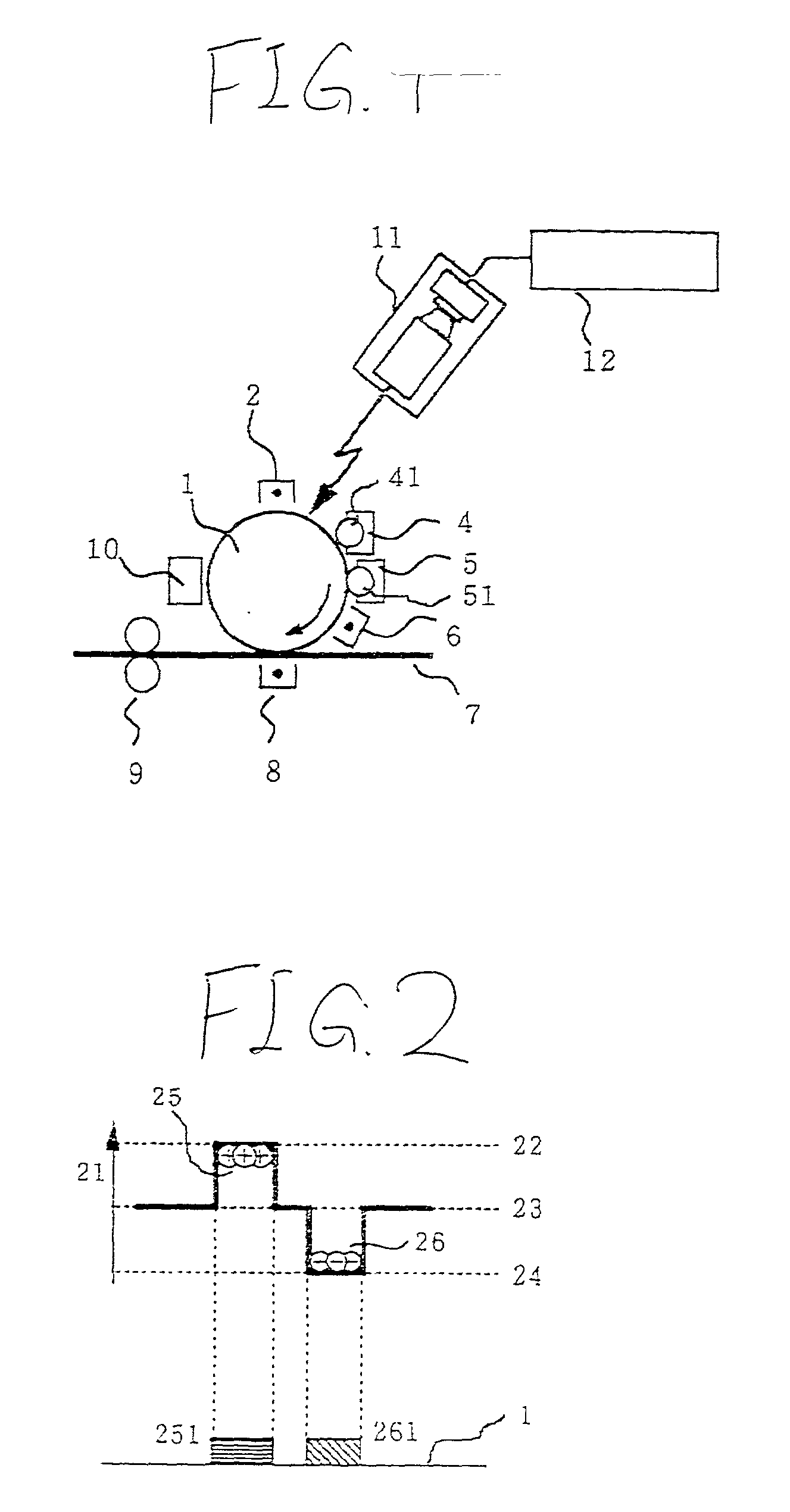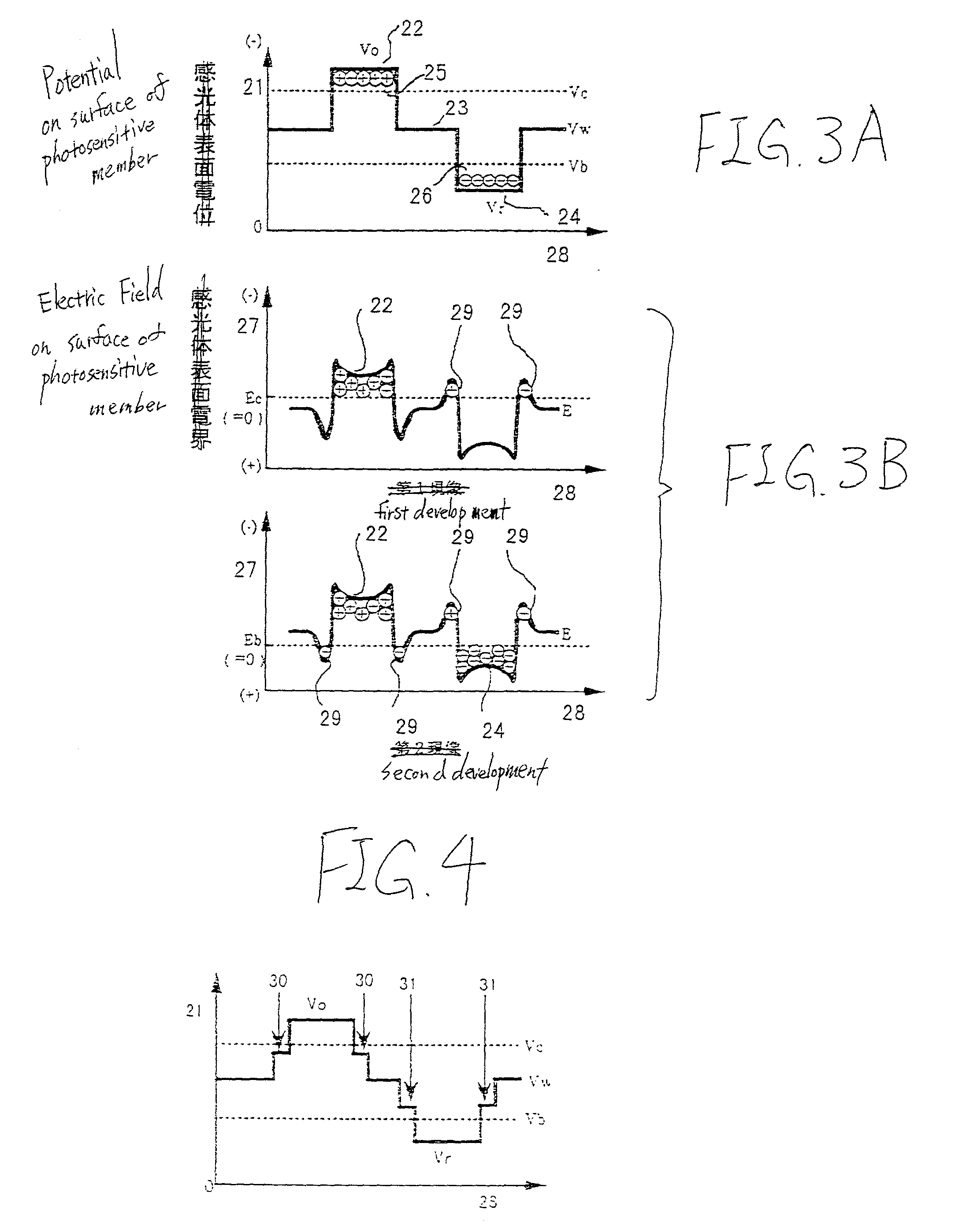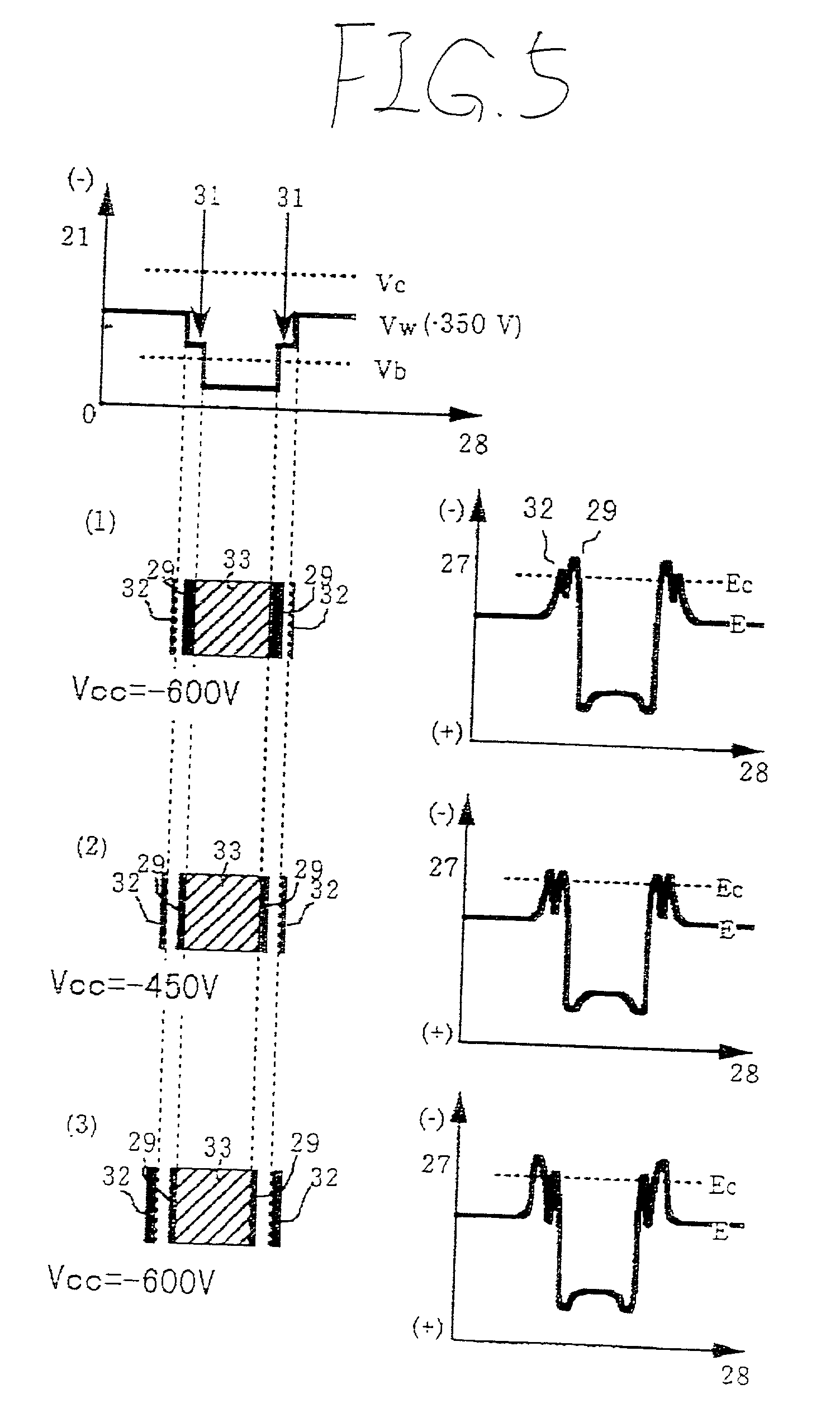Electrophotographic apparatus
a technology of electrophotography and apparatus, applied in the field of electrophotography apparatus, can solve the problems of erroneous addition of fringes, affecting the accuracy of electrophotography, and the upper limit of the effect of fringe control
- Summary
- Abstract
- Description
- Claims
- Application Information
AI Technical Summary
Problems solved by technology
Method used
Image
Examples
first embodiment
[0040] First Embodiment
[0041] A first embodiment of the invention will be described with reference to FIGS. 1 to 7.
[0042] FIG. 1 is a sectional side view of a two-color laser printer using the potential dividing development method of the embodiment. The reference numeral 1 denotes a photosensitive drum (referred to also as a photosensitive member or a recording medium), 2 denotes a charger, 4 denotes a first developing unit, 41 denotes a developing roll of the first developing unit 4, 5 denotes a second developing unit, 51 denotes a developing roll of the second developing unit 5, 6 denotes a pre-transfer charger, 7 denotes a printing sheet (recording medium), 8 denotes a transfer unit, 9 denotes a fixing unit (fixing roller), 10 denotes a cleaner, 11 denotes an exposure unit, and 12 denotes an exposure controlling unit.
[0043] An electrostatic latent image is formed by the exposure unit 11 consisting of a semiconductor laser the light emission of which is controlled by the exposure ...
second embodiment
[0085] Second Embodiment
[0086] As another embodiment of the invention, an example of a laser printer in which a high-speed operation is not requested unlike the first embodiment described above is proposed. In the embodiment, in auxiliary exposure of an edge of a normal development image, the laser driver for forming the intermediate potential is used also as an auxiliary exposure unit for preventing fringe development from occurring. In auxiliary exposure of an edge of a reversal development image, the laser driver dedicated to auxiliary exposure or the laser driver for forming a reversal image may be used also as the auxiliary exposure unit (this will be described in the subsequent embodiment).
[0087] In the embodiment, the basic configuration and operation of the two-color laser printer using the potential dividing development method are identical with those of the two-color laser printer of Embodiment 1 shown in FIG. 1. However, the one-dot time is set to be longer than that in E...
third embodiment
[0091] Third Embodiment
[0092] As a further embodiment of the invention, an example of a laser printer in which a high speed operation of a laser printer is not requested (the one-dot time is 80 ns) as in the second embodiment is proposed. In the embodiment, in auxiliary exposure of an edge of a normal development image, the laser driver for forming the intermediate potential is used also as an auxiliary exposure unit for preventing fringe development from occurring, and, in auxiliary exposure of an edge of a reversal development image, the laser driver for forming a reversal image is used also as the auxiliary exposure unit.
[0093] In the embodiment also, the basic configuration and operation of the two-color laser printer using the potential dividing development method are identical with those of the embodiments described above, and the auxiliary exposure operation on a normal development image is identical with that of the second embodiment.
[0094] In the embodiment, a method is emp...
PUM
 Login to View More
Login to View More Abstract
Description
Claims
Application Information
 Login to View More
Login to View More - R&D
- Intellectual Property
- Life Sciences
- Materials
- Tech Scout
- Unparalleled Data Quality
- Higher Quality Content
- 60% Fewer Hallucinations
Browse by: Latest US Patents, China's latest patents, Technical Efficacy Thesaurus, Application Domain, Technology Topic, Popular Technical Reports.
© 2025 PatSnap. All rights reserved.Legal|Privacy policy|Modern Slavery Act Transparency Statement|Sitemap|About US| Contact US: help@patsnap.com



